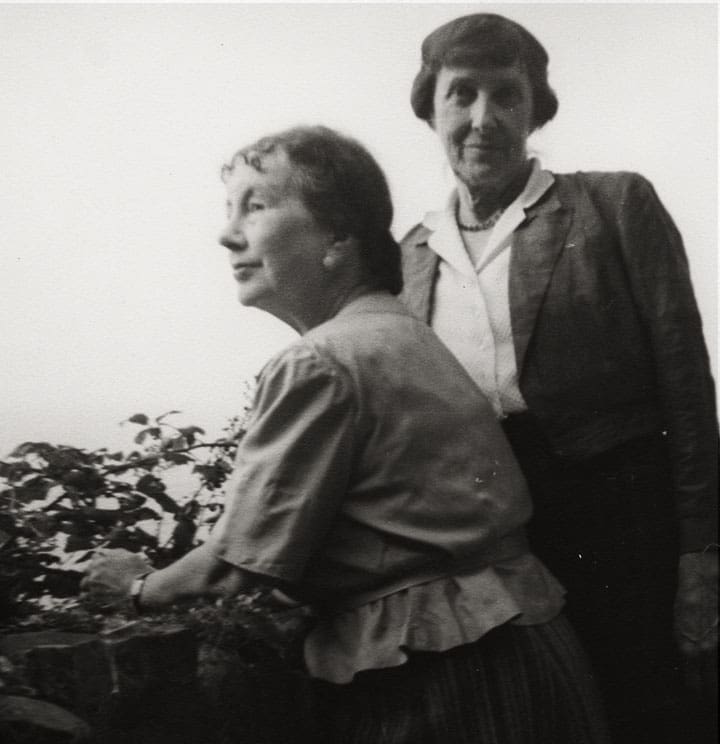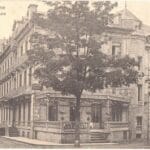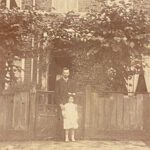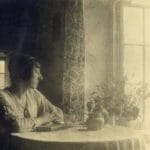As a typical archive rookie, I arrived at the Burton confident that the Ackland and Edwards Archive would contain the answers to all my questions. In fact, every day I spend in the archive, I leave with more questions than I arrived with. It’s rather like trying to unravel a particularly knotty piece of fishing line. It’s time consuming, with the constant possibility of the line snapping, but ultimately satisfying. To illustrate this untangling process, I will describe my discovery of ‘The Dark Pool’. This is simultaneously a painting and an unpublished poem – and also a real place in Bucks Mills.

The Dark Pool: Painting
I found Judith Ackland’s painting of The Dark Pool first on the RAMM collection website. It stood out because it seemed very different to her other work. It’s more stylised, like an illustration from a children’s book. It shows both Mary Stella Edwards and Judith Ackland next to the pool… though they’re easy to miss as they’re almost hidden behind a beech tree in its full autumn glory. The painting is full of mystery and colour, and the dark pool seems depthless, surrounded by a tangle of trees and thicket.
The Dark Pool: Poem

A few months later, I found Edwards’ poem in a folder of typed and handwritten poems. It describes an unsettling encounter at the Dark Pool, but was dated 16 June 1926, so I didn’t immediately put the two together. Then I found a 1979 letter from Mary Stella Edwards to Michael Borrie (who worked at the British Museum) that mentions the painting. “After my death one that hangs in my studio … is to follow to Exeter; it is a memory design of an actual happening, & the only one that shows us together. ‘The Dark Pool’. It has hung there for over 50 years. A poem came to me of the same event.”
It’s interesting that she describes it as a “memory design”, and that it’s the only painting which shows the two women together. True! why hadn’t I spotted this before? But what made Judith transpose this summer memory into an autumn painting? Reading the poem again, it struck me that the “leaf-littered” path and the crouching “sodden trees” with their “spent boughs” also feels very autumnal… Come to think of it, this is very appropriate for a poem exploring the threat of lost youth…
Looking for the backstory…
What happened at the Dark Pool? I wondered whether Mary Stella wrote about its discovery in her journal. But no. The two women were at the Cabin for the whole of May and June in 1926. However, the only entry for those months is for 14 May, when they found a letter from Leonard Woolf, containing the publishing contract for her book Time and Chance, attached to the door of the Cabin.
The closest I’ve come to discovering the backstory is in a letter to her friend Margaret Milliken in 1975. Mary Stella describes how she and Judith explored the many paths along the “wooded cliffs”, some of which became so well-known “that every drop or rise in the ground, every stone, was found by our feet alone”. But, she wrote: “sometimes there were surprises, as when we found ‘The Dark Pool’ – you remember Judith’s picture with us standing together on its verge under a golden autumn tree?”
Finding the Dark Pool today
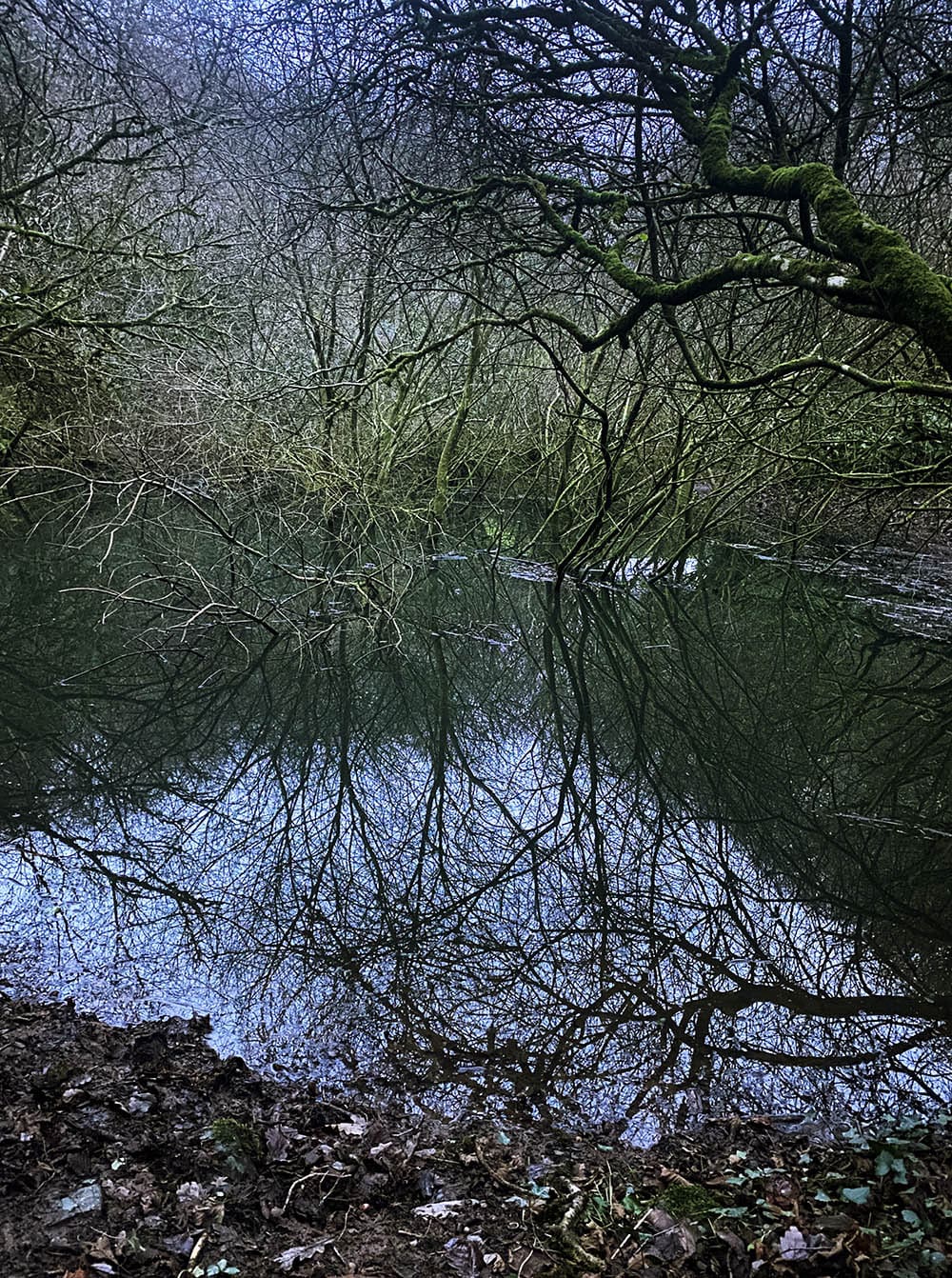
In her later journals, Mary Stella regularly mentions the Dark Pool as a way-marker on their walks along the cliffs. From her descriptions I worked out that it was very likely Gauter Pool, where the coast path (which didn’t exist back then) meets one of the old green lanes. In the summer the pool often dries up and doesn’t feel threatening at all. However, last December, walking from Peppercombe to Bucks Mills on the coast path in the near-dark (as they had done), and after a lot of rain, I came on the pool quite unexpectedly and the sudden shock of it made me shout out loud! I think I frightened the owls. The pool came as a flash of light as it reflected the sky, and suddenly I understood both the poem and painting in a totally different way. I had found ‘The Dark Pool’, but not in the archive!
In the weeks and months to come during my research in the archive, I may find out more about the Dark Pool. If I do, I’ll write a follow-up to this blogpost. Next time: Why does the archive exist?
Previous blogpost: Reading between the lines
